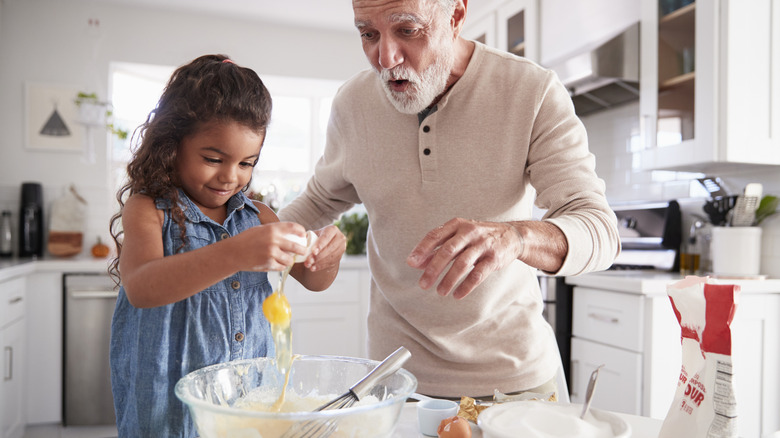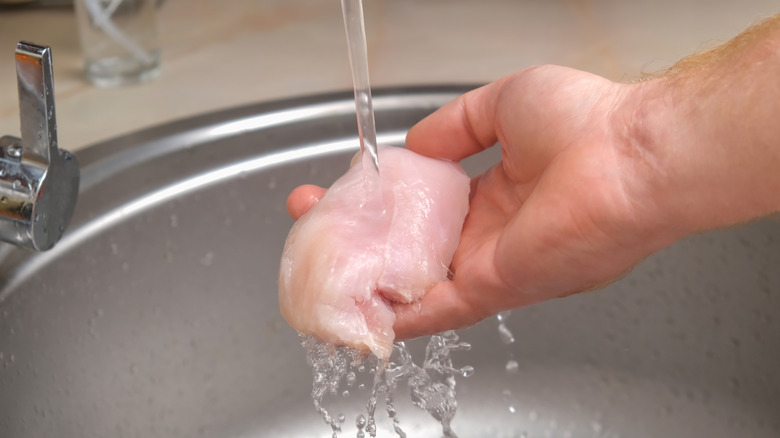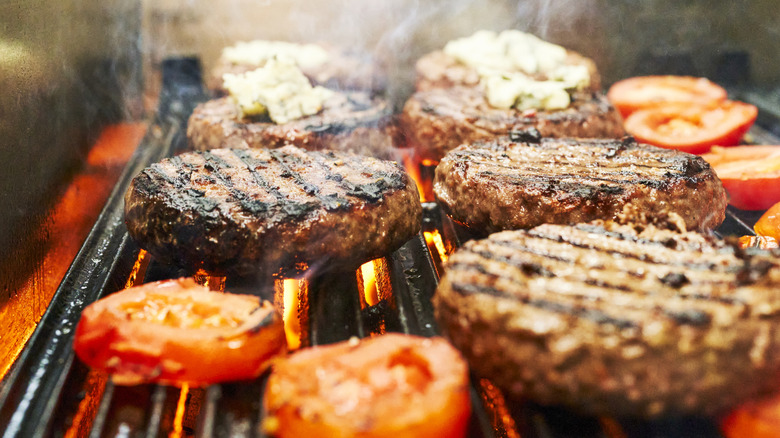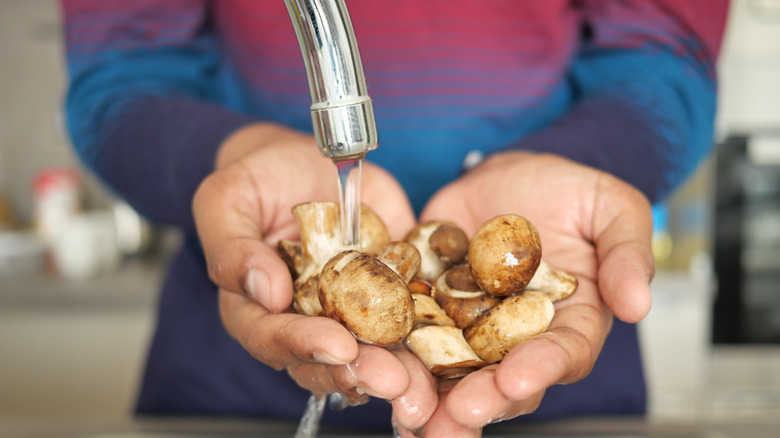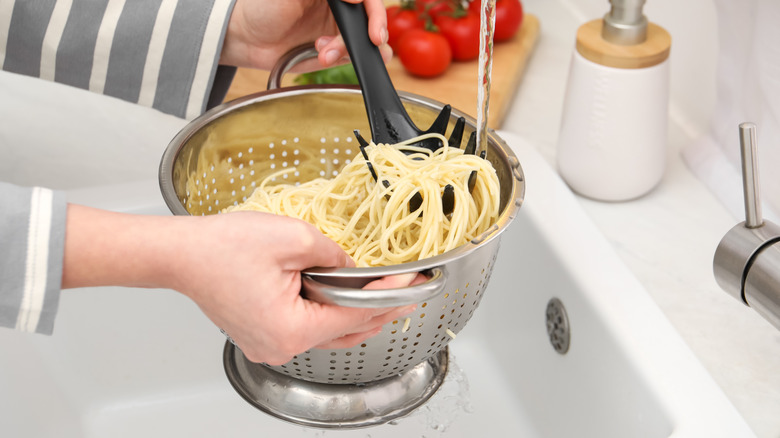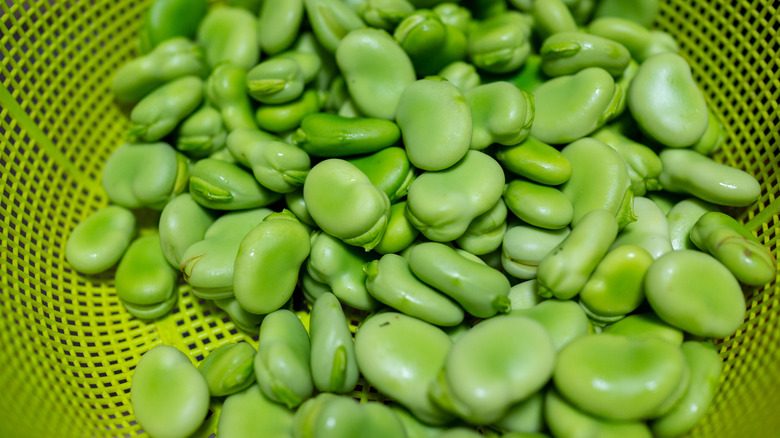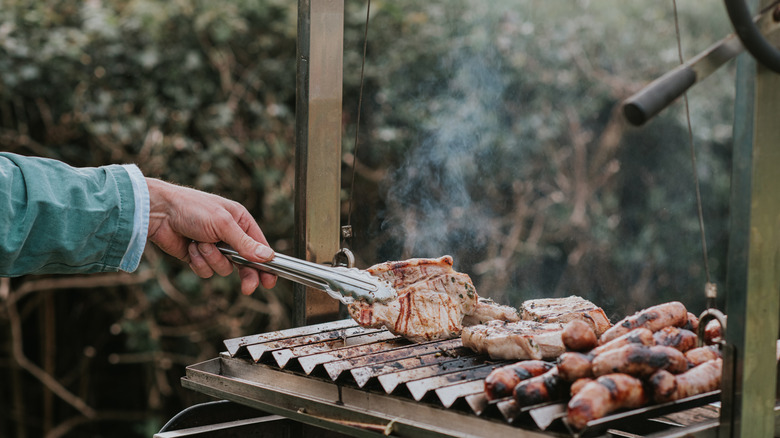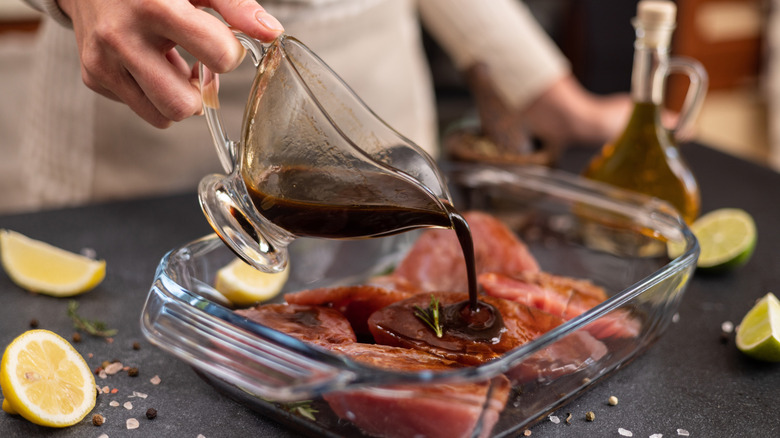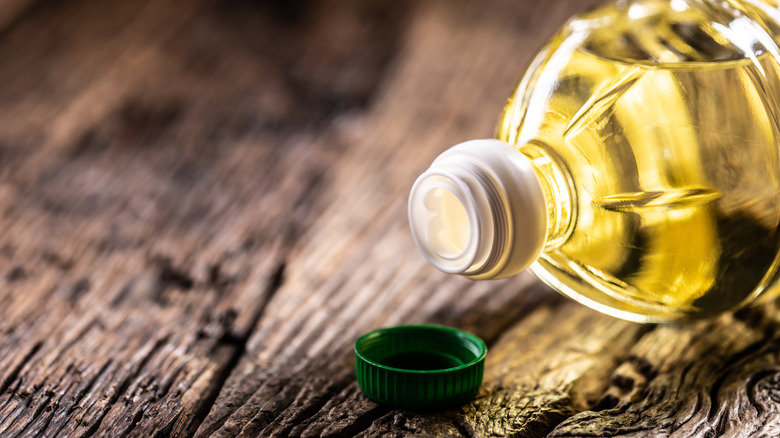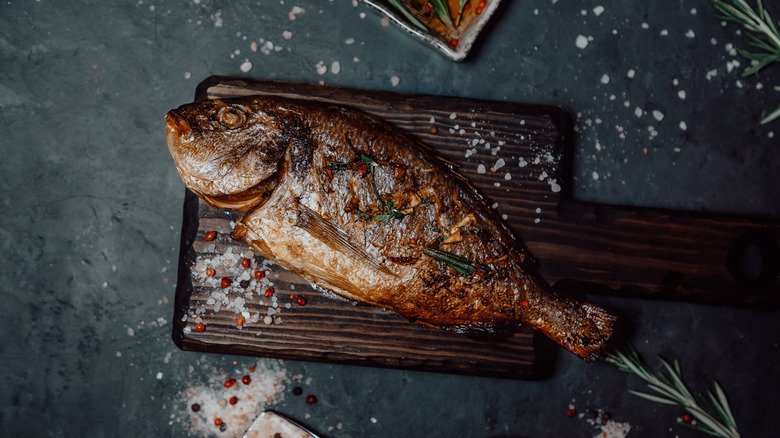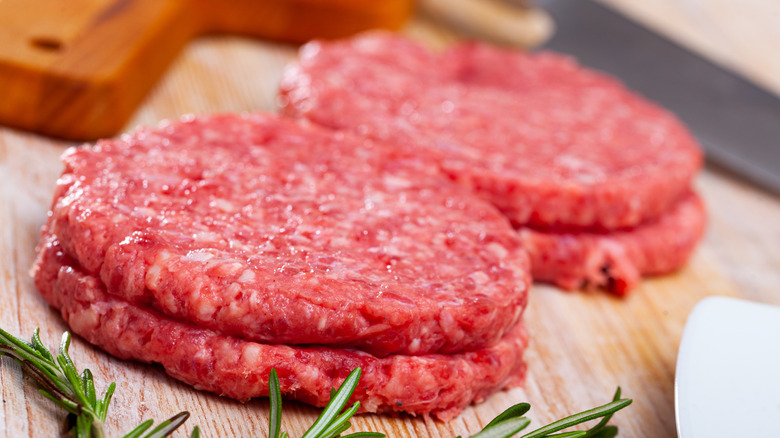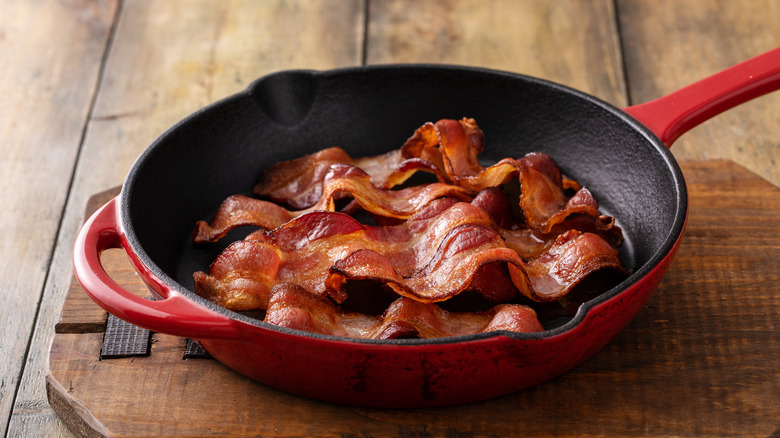12 Old-School Cooking Tips That Might Actually Ruin Your Food
Many old-fashioned cooking tips passed down from grandparents still hold plenty of value. Tips like "don't cook fresh herbs," "save your bacon grease," and "use bruised apples in pies" make sense. However, a few pieces of that old-school wisdom haven't been as foolproof as previous generations believed. Often handed down as strict rules, these cooking tips turned out to be based more on tradition than on solid evidence. And while some may do little more than affect the flavor and texture of your food, others can be downright dangerous, potentially leading to serious illness.
Many of these retro culinary hacks originated at a time when home cooks lacked modern conveniences like reliable refrigerators, food thermometers, or access to high-quality produce. As such, what worked back then doesn't necessarily translate to the reality of today's kitchens, which offer better cooking equipment and safer ingredients. Curious to find out more? Let's take a look at some of the most outdated culinary tips that could leave you with a substandard meal or even a serious case of food poisoning.
Always rinse raw chicken before cooking
Some home chefs assume that just like with vegetables and fruit, rinsing raw chicken makes it cleaner by removing bacteria, bone fragments, or slimy juices. In fact, this seemingly harmless step is likely to spread bacteria like salmonella and campylobacter around your kitchen, increasing the risk of foodborne diseases. Instead of making it safer, washing poultry under running water in the sink can splash dangerous pathogens onto nearby countertops, kitchen utensils, and other food. According to a study by the USDA, 60% of people who washed poultry had bacteria in their sink afterward, and 26% of them ended up transferring the bacteria to ready-to-eat ingredients like lettuce and tomatoes.
To avoid making your family sick when cooking chicken, the USDA recommends following several simple steps — and rinsing the poultry in the sink is definitely not one of them. Firstly, it's important to prepare any foods that won't be cooked like salads before handling raw chicken to avoid any cross-contamination. Next, always wash your hands and sanitize all surfaces and utensils that came into contact with the raw poultry. Finally, cook the chicken until it reaches an internal temperature of 165 degrees Fahrenheit to kill harmful bacteria.
Press down on burger patties with a spatula
While pressing down on a burger patty might seem like a great way to speed up cooking, it's actually counterproductive, unless you are making making smash burgers. A single press on smash burger patties is actually desirable because it maximizes surface contact with the grill and creates crust via the Maillard reaction. That said, if you are making a regular burger, this approach is likely to backfire.
Some cooks argue that pressing burger patties helps them cook more evenly, but in reality it just squeezes out the juices and fat out of the burger, leaving it dry. Burgers naturally puff up in the middle as they cook, and while pressing them may seem like a good way of redistributing the meat, it just leaves the meat less juicy. In addition, if you press down on patties as they cook on the grill, their juices can spill onto the coals and cause flare-ups.
Perhaps one Quora contributor sums the point up best, saying, "One of the biggest problems home cooks have is the constant need to mess with the food, instead of just letting it cook. You put the burger in your skillet or grill pan, you let it cook until you start to see browned edges and it releases from the pan then you flip it and let it finish cooking. Don't mess with it, don't shuffle it around in the pan, and never, ever, squish it with the spatula. Unless you like really dry burgers."
Never wash or soak mushrooms
There is no denying it — store-bought mushrooms can appear dirty. Mushrooms grow close to the soil, which means that they sometimes have flecks of peat stuck to them. Since mushrooms are a little like sponges, cooks long believed that submerging them in water was likely to cause them to absorb excess moisture, ruining both their flavor and texture. In fact, modern tests show that a quick rinse doesn't hurt mushrooms at all, as long as they are dried immediately afterward. That said, it's probably best not to soak them for longer periods of time since mushrooms can easily become waterlogged. In addition, it's important to only clean mushrooms just before you need them, as washed mushrooms don't store well.
Not all mushrooms should be cleaned the same way. Mushrooms commonly found at the store, including portobello, cremini, buttons, and shiitakes, should be dunked in a bowl of water, swirled, drained, and patted dry with a dish towel. Cultivated wild mushrooms like maitake are more delicate and as such should be soaked gently, then dried thoroughly with a salad spinner to preserve their shape and texture. Foraged wild mushrooms such as chanterelles require more care since they tend to be dirtier and sometimes even harbor tiny bugs. If necessary, you may even wash forest mushrooms in salt water to flush out any critters before cooking.
Rinse cooked pasta
From rich mushroom Bolognese to Cincinnati chili spaghetti, pasta is adaptable to regional flavors and traditions. The kitchen staple has been around for quite a while, already making an appearance in Italian dishes at the end of the 13th century. While it's unclear when the practice of rinsing cooked pasta came into vogue, it likely originated to deal with lower-quality noodles made with blends of tender and durum wheat. Since this kind of pasta released a lot of starch, it was probably assumed that rinsing the noodles would stop them from overcooking and clumping together.
The practice of rinsing pasta stems more from outdated cooking habits than from any real culinary benefit. In reality, the starch on cooked pasta is precisely what helps sauce cling to the noodle strands, giving it flavor. Some home chefs even add a little pasta water to their sauces to make them thicker and more flavorful.
The no-rinse pasta rule has a few exceptions. Running water over pasta cools the noodles quickly, making the method ideal for cold pasta dishes and salads. In addition, some Asian noodles, including ramen and udon, are usually rinsed to remove excess starch, avoid sliminess, and keep the broth or sauce light and clear.
Never salt beans before they are completely cooked
Old-school wisdom advises against salting beans during the cooking process, claiming that it makes them tough and overly crunchy. In reality, this couldn't be further from the truth. Salting beans after they are cooked will only make their surface taste salty, leaving their interiors unseasoned and bland. In fact, overly tough beans are usually caused by the age of the beans, cooking them in hard water, or boiling them with acidic ingredients like tomatoes.
Far from ruining their texture, adding salt to the water early or midway through cooking beans actually has numerous benefits. Salt disrupts the calcium and magnesium ions that cause bean skins to stay tough. Once the skin becomes softer, the beans absorb water more easily, which shortens cooking time and ensures that the beans cook evenly. This permeability also reduces pressure inside the beans so they are less likely to burst open. Home chefs also recommend soaking dried beans in salty water to improve their flavor, soften their skins, and help them cook faster.
Always cook pork until it's well done
For generations, people were taught that any pink in pork was dangerous due to possible contamination with trichinella parasites. Even the USDA used to recommend cooking pork to 160 degrees Fahrenheit — about the same as well-done beef. However, this changed in 2011, when the USDA revised its guidelines, stating that cuts of pork can be taken off the heat when they reach an internal temperature of 145 degrees Fahrenheit, provided that this is followed by a three-minute rest. The reason for this is that pork is now much safer thanks to advances in pig farming, such as indoor housing and precautions taken to prevent the spread of bacteria.
While some still enjoy the firm texture and browned flavor of well-done pork, the meat certainly doesn't need to be cooked to that point anymore to be considered safe to eat. This means that pork that is juicy and slightly pink in the center shouldn't be a cause for concern. In fact, medium-done pork has been adopted by some restaurants as the default serving style.
The shift to pork with a medium finish reflects a growing understanding of how carryover cooking affects pork once it's taken off the heat. Kevin Waetke, vice president of strategic communication for the National Pork Board, highlighted this in an interview with The Takeout, saying, "If you cook it until it's gray or white on the heat, and then you remove it, then it's going to continue to cook until it's dry and leathery. And no one wants that."
Marinate meat, poultry, and fish overnight to tenderize them
Marinating meat can serve a very important purpose beyond infusing it with flavor. Acids such as vinegar, wine, and citrus, and enzymes like papaya, pineapple, and kiwi can break down the proteins in the meat, making it more tender. In addition, sugars in marinades can promote browning, giving grilled or roasted meat a beautiful caramelized crust.
Since marinades break down protein structures in meat and other proteins, leaving it too long in the mixture can make it stringy or mushy rather than tender. The type and quality of the protein is an important factor when it comes to marinating times. Tender cuts of beef, poultry, and fish need much less marinating than tougher cuts like flank steak, brisket, and pork shoulder. Similarly, smaller pieces of meat and seafood absorb marinades faster, making them more prone to textural damage. As a rule of thumb, fish and seafood should only marinate for 15 to 30 minutes, poultry pieces for 30 minutes to two hours, and tender cuts of beef for up to two hours.
Aside from ignoring recommended marinating times, there are several other no-nos when it comes to preparing protein for cooking. Avoid overpowering the marinade with too much salt, since it's likely to dry out the meat. Never recycle a marinade. Once a marinade comes in contact with raw meat, it becomes contaminated with harmful bacteria. Lastly, never freeze meat in marinade, as the combination of structural breakdown and ice crystal damage can leave the meat unpleasantly mushy.
Add oil to pasta water so the strands won't stick together
Though common, the practice of adding oil to pasta water doesn't prevent the pasta from clumping together. In fact, this old kitchen habit can do more bad than good, as noted by Matthew Cutolo, a third-generation Italian-American chef at Gargiulo's Restaurant in Coney Island, New York, when speaking to The Takeout: "It creates a thin, greasy layer on the pasta, preventing sauces from clinging properly," he said. "This results in a slippery, less flavorful dish." Indeed, since oil is less dense than water, it pools on top of the pot, sticking to the pasta noodles when they are drained.
While olive oil has its rightful place in the kitchen, there are much better ways of ensuring that your pasta doesn't stick together than adding fat to the cooking pot. The best way to avoid clumping is also the simplest — all that's required is to stir the pasta once in a while as it cooks. Aside from this, it's best to use a large cooking pot with plenty of water to give the individual pasta strands enough room to cook separately. Similarly, adding a pinch of salt to pasta water can stop the starches in the noodles from forming a gluey coating that causes them to stick. Even if the pasta seems to clump together once drained, a little sauce can go a long way toward separating the individual noodle strands.
Use a lot of flour when rolling out pastry dough
A light dusting of flour underneath and on top of pastry dough can mean the difference between smooth, effortless rolling and a sticky mess. This is because the flour creates a barrier that stops the dough from sticking to the rolling pin or kitchen counter. However, while a sprinkle of flour can keep the dough light and workable, adding too much flour into the equation can throw off the delicate ratio of ingredients. For instance, incorporating too much flour into a flaky, buttery pie crust can affect the recipe's butter and flour balance, interfering with the flakiness of the final product.
Since too much flour can dry out dough or change its texture, some chefs advocate using a simple substitute — vegetable oil or olive oil. Paul Hollywood, who appeared on "The Great British Bake Off," advises on his website that using oil instead of flour on your work surface and rolling pin can prevent dough dryness and texture problems usually caused by excess flour.
Cook fish until it flakes
Unlike beef, which can be cooked to various levels of doneness, fish is far less forgiving. With lower collagen content and shorter muscle fibers, it is much more delicate and sensitive to heat. The challenge of cooking fish lies in finding the sweet spot between ensuring that it's fully cooked to destroy harmful bacteria and keeping it moist and tender. Fish that isn't cooked thoroughly enough is raw and translucent, while overcooked fish is dry and tough. The conventional wisdom used to be that fish should always be cooked until it flakes easily with a fork. Today, many chefs argue that fish that flakes this easily is already overdone.
There are much better ways to ensure your fish turns out just right than opening it up and testing it with a fork. While you can try to rely on sight or touch, the best way to guarantee perfect doneness is with a food thermometer. According to the USDA, fish should be cooked to an internal temperature of 145 degrees Fahrenheit to kill any harmful bacteria. Nevertheless, some professionals recommend cooking certain seafood to just under that temperature and allowing carryover cooking to finish the job.
Use lean meat for burgers
While the lower calories and fat of lean beef burger patties might appeal to the health-conscious, they can also result in dry and rubbery burgers. This is because the fat in the beef keeps the patties moist. It also helps to keep them together, with lean meat more likely to fall apart in the pan or on the grill.
The numbers on ground beef packaging at the store refer to its lean-to-fat ratio. While different chefs have their own preferences, a good burger blend usually has a lean-to-fat ratio between 70/30 and 80/20. This means either 70% or 80% lean beef and 30% or 20% fat. This ratio can also depend on how well-done you like your burger patties. While an 80/20 might do the trick for a medium-rare burger, those who like their burgers well-done should probably opt for ground beef with a higher fat content. In addition, it's best to select beef with higher fat content when grilling, since a lot of the fat will drip down into the flames.
Lean beef is well-suited for dishes that rely on sauce like chili, casseroles, and spaghetti Bolognese, as the moisture in the sauce balances the dryness in the meat. If you absolutely have to use lean beef to make burger patties, there are a few tricks you can use to try keeping them juicy. Some of these include mixing the beef with ground pork, or boosting its moisture content with eggs, mayonnaise, bacon fat, or olive oil.
Only start cooking bacon once the pan is hot
There are several reasons to preheat the pan before cooking. A hot skillet prevents sticking and helps moisture escape quickly, promoting caramelization. However, most rules have exceptions, and this is one of these cases. It's better to start frying delicate ingredients like sliced garlic, nuts, and seeds in a cold pan because they can easily burn if the skillet is too hot. Ingredients that contain a lot of fat, such as bacon, also benefit from a slower temperature increase that allows their fat to render gradually without burning.
Raw bacon is around 45% fat. Placing it directly on a hot pan causes the outside to sear quickly, making the strips curl or burn before the fat has a chance to melt. On the other hand, putting bacon on a cold pan gives it time to render slowly, leaving it uniformly crispy without those nasty fatty bits. This approach also reduces splatter with fewer sudden pop ups of hot oil and less mess. Finally, the grease left behind on the pan is likely to be less scorched, which makes it ideal for storing in a jar for later use when frying eggs or sautéing vegetables.
